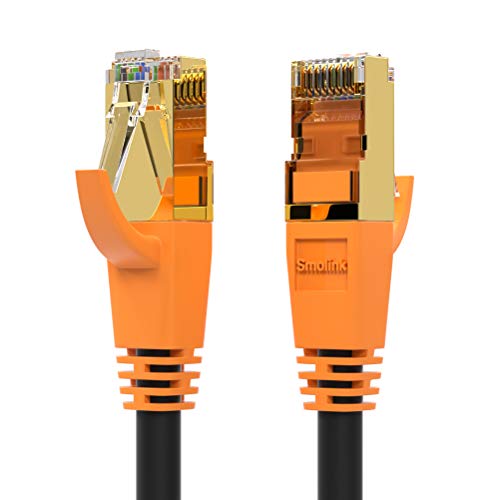Serial Cables
Serial cables, also known as serial data cables, are used for transmitting data in a serial manner between devices. They are commonly used for connecting various devices, such as modems, routers, serial ports on computers, and other serial devices.
Serial cables typically have two connectors at each end, with one end connecting to the serial port on a device and the other end connecting to another device’s serial port or a computer’s serial port. The connectors can vary depending on the specific serial interface standard being used, such as RS-232, RS-422, or RS-485.
Serial cables are available in different configurations, including DB9 (9-pin), DB25 (25-pin), and smaller RJ-style connectors. The choice of connector depends on the specific serial interface and device requirements.
These cables transmit data one bit at a time sequentially, often at lower speeds compared to parallel cables. They are known for their simplicity and reliability in transmitting data over longer distances, making them suitable for applications where longer cable runs are required.
Serial cables may or may not provide power supply, depending on the specific device and interface being used. Some serial cables include additional wires for transmitting control signals, enabling features such as hardware flow control.
It’s important to note that serial cables are specific to serial interfaces and may not be compatible with other interface standards such as USB or Ethernet. Serial interfaces are commonly used in industrial applications, legacy systems, and certain specialized devices that require serial communication.
When using serial cables, it’s crucial to ensure proper pin-to-pin connectivity, especially when connecting different devices or interfaces. Additionally, it’s important to configure the correct baud rate, parity, stop bits, and other settings in the connected devices or software to ensure proper data transmission and communication.
Showing 1–12 of 25 results
50 Foot DB9 Male to Female RS232 Extension Serial Cable – 28 AWG Shielded
Cables & Accessories $17.96Amphenol CS-DSDHD15MM0-015 15-Pin HD15 Deluxe D-Sub Cable, Shielded, Male/Female, 15′, Gray
Cables & Accessories $16.75DTech 1.5ft DB9 Serial Cable COM Port Male to Male RS232 Straight Through 9 Pin Data Cord (0.5 Meter, Black)
Cables & Accessories $7.98DTech 10 ft DB9 Serial Cable Female to Female 9 Pin Straight Through (Black, 3 Meters)
Cables & Accessories $11.88DTech 15ft COM Port Serial Cable Male to Female RS232 Extension 9 Pin Straight Through Cord
Cables & Accessories $13.98
















